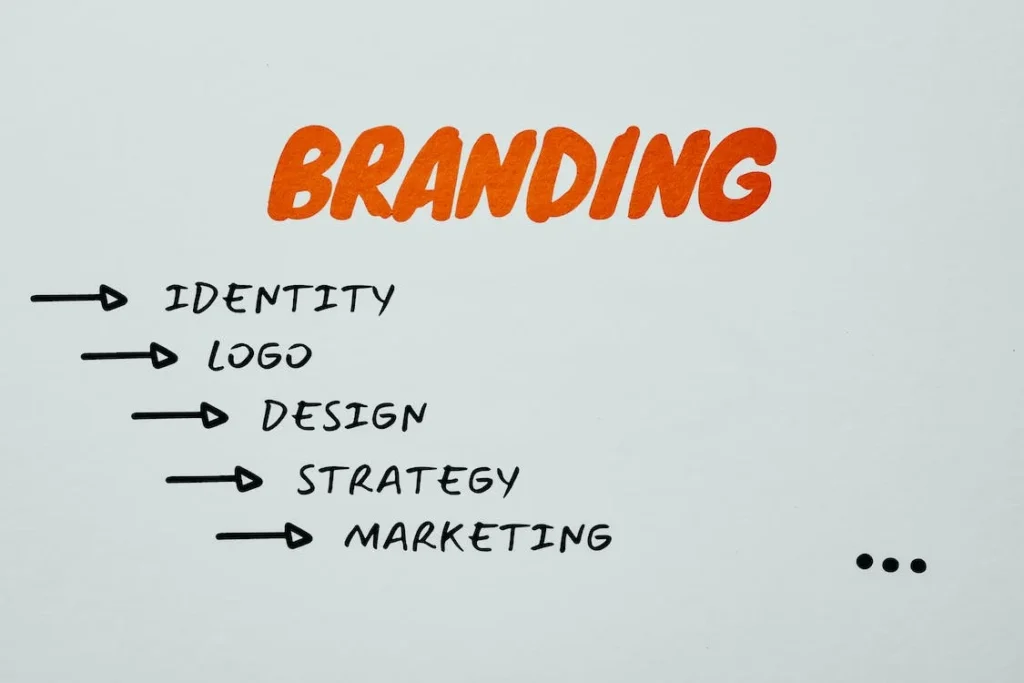In a world that is rapidly embracing conscious consumption, the onus is increasingly on businesses to align their values, operations, and objectives with the imperatives of social responsibility. The modern consumer isn’t just looking for quality products or services but is significantly influenced by a brand’s ethical stance, environmental impact, and contributions to social welfare. The landscape of branding is no longer defined solely by logos, advertising campaigns, or marketing messages; it is profoundly influenced by a brand’s commitment to sustainability. In this comprehensive guide, we will explore the intricate connection between branding and sustainability, unraveling the strategies to infuse brand identities with ethical and responsible practices.
In this age, where each purchase is a statement of personal ethics and values, brands are endowed with the colossal task of not just meeting market demands but moral imperatives too. Each product isn’t just a commodity but a narrative, narrating the saga of its origins, ethics, impacts, and contributions.
The New Consumer Landscape
Gone are the days where flashy advertisements and strategic product placements could win the loyalty of customers. Today’s consumer is informed, discerning, and conscientious. They are looking under the hood, beyond the glossy exteriors and alluring packaging. They are questioning the origins, the making, the impacts, and the ethics.
The Ethically Informed Customer
Ethics now sits at the forefront of brand choices. Every purchase is intertwined with questions: “Is this product sustainably made? Is the brand committed to fair trade? What is the ecological footprint?” Consumers are echoing a demand for transparent and ethical brands, and this influence is reshaping market dynamics. Brands are no longer the sole storytellers; consumers, communities, and critics are all active narrators weaving the narrative of a brand’s identity.
The Rise of Conscious Consumption
The modern market is characterized by conscious consumption. Products aren’t merely assessed for their utility or aesthetics but evaluated on the yardstick of sustainability. Brands are now entities, personalities, and entities judged, not just by their offerings but their values, ethos, and contributions to societal and environmental wellness.
Aligning Consumer Values with Brand Ethos
In the age of information, consumers are well-versed with the impacts of their choices. Every purchase is seen as a vote, an endorsement, or criticism of the brand’s ethical stance. Thus, brands are now challenged to align their values, objectives, and operations with the ethical expectations of their audience.
The Intersection of Profit and Purpose
The new-age brands stand at the intersection where profit meets purpose. The economic objectives are now intertwined with ethical imperatives. The balance between commerce and conscience is not a choice but a necessity, a core criterion influencing consumer loyalty and brand affinity.
Brand Responses to the Evolving Dynamics
As consumers are becoming more conscientious, brands are responding with strategic, yet genuine shifts in their foundational principles, operations, and communications. It’s a dance between being authentically committed to sustainability and effectively communicating this commitment to the audience.
Crafting Ethical Brand Identities
Brands are adopting comprehensive approaches to intertwine ethics into their identity. It’s not just about ‘green’ labels but about authentic incorporations of sustainable practices. From sourcing raw materials to production processes, employee welfare to community engagements, every aspect is becoming a chapter in the brand’s ethical narrative.
Transparency as a Pillar of Trust
In the information age, secrecy is a shortcut to skepticism. Brands are opening their doors, unveiling their processes, impacts, and efforts in the journey towards sustainability. Transparency is not an option but a necessity, laying the foundational stones of trust and credibility.
The Role of Certifications and Alliances
Certifications, accreditations, and alliances with environmental and social bodies are becoming emblems of trust. They are not just logos on the packaging but stamps of credibility, testifying the brand’s commitment and contributions to ethical and sustainable imperatives.
Innovations Driven by Sustainability
Innovation isn’t just technology and features. The modern brand is innovating in sustainable practices, eco-friendly materials, reduced emissions, energy efficiency, and societal contributions. Every product is a blend of quality, innovation, and ethics, each feature echoing not just utility but responsibility.
The Strategic Alignment of Branding
It’s a strategic alignment, where brand values, communications, aesthetics, and experiences are harmoniously echoing the ethos of sustainability. Every touchpoint is an articulation of commitment, every interaction a testament to the brand’s ethical journey.
Storytelling with Purpose
Brands are narrating stories, not just of products but of their journeys, struggles, and triumphs in adopting and advancing sustainability. Every product comes with a backstory of ethical considerations, sustainable innovations, and societal contributions.
Engaging Audiences in the Journey
It’s a collaborative narrative. Consumers are not just audiences but participants. Brands are engaging them in their sustainability journeys, seeking inputs, sharing updates, celebrating milestones, and addressing challenges. Every consumer is a co-traveller in the brand’s ethical journey.
Aesthetics Echoing Ethics
The visual identity, packaging, store designs, and digital interfaces, every aesthetic element is a canvas articulating the brand’s commitment to sustainability. Colors, designs, materials, and displays, every aspect is meticulously crafted to echo the brand’s ethical stance and sustainable practices.
Experiential Ethical Branding
The brand experience is seamlessly woven with ethical elements. Store experiences, product interactions, customer service, and digital engagements are designed to not just deliver utility but to articulate and amplify the brand’s ethical and sustainable commitments.
Impact on Consumer Perception and Market Dynamics
In this pivotal evolution of branding, consumers are at the core, their perceptions are shaping brands, and in turn, brands are influencing consumer beliefs and behaviors. It’s a symbiotic relationship, where values, expectations, and contributions are exchanged and evolved.
Evolving Consumer Expectations
Consumers are not just seeking products but values. Every purchase is a reflection of their beliefs, an endorsement of the brand’s ethics. Brands are not choice but voices, articulating consumers’ societal and environmental commitments.
Brand Loyalty Anchored in Shared Values
Loyalty is not induced by quality and price alone. Shared values, ethical commitments, and sustainable contributions are the anchors of modern brand loyalty. Consumers are ambassadors, their advocacy rooted in the brand’s ethical identity and contributions.
Market Differentiation Through Ethical Identities
In crowded marketplaces, ethical and sustainable commitments are the new differentiators. Brands are distinguished not just by their offerings but by their ethical identities, sustainable practices, and societal contributions.
The Competitive Edge of Ethical Branding
Ethics and sustainability are not just moral but strategic imperatives. Brands adhering to them are enjoying enhanced credibility, loyalty, advocacy, and market share. It’s a competitive edge, carved not by marketing prowess but by ethical consistency and sustainable contributions.

Related: Check out our free SEO suite

Practical Steps and Foreseeable Challenges
The integration of sustainability into branding is not an overnight transformation but a strategic, deliberate, and intricate process. Here, we dive into practical steps while casting light on the challenges that brands might encounter.
Value Integration
Brands begin by weaving sustainability into their core values. It’s not an add-on but integral, shaping decisions, actions, communications, and interactions. Each element of the brand echoes the unwavering commitment to ethical and sustainable practices.
Sustainable Innovations
Innovations are pivotal. From sustainable raw materials, ethical manufacturing, eco-friendly packaging to carbon-neutral deliveries, every element of the product lifecycle is infused with innovations that minimize environmental footprint and maximize societal contributions.
Transparent Communications
Transparency is the soul of sustainable branding. Brands are openly sharing their journey, achievements, and challenges in sustainability. Every claim is backed by evidence, every story validated by authentic data and credible endorsements.
Authenticity & Consistency
However, the challenges are stern. Authenticity and consistency are paramount. Greenwashing, exaggerated claims, and inconsistent practices are not just legal but ethical and reputational hazards. Consumers, regulators, and activists are vigilant, and credibility is earned by unwavering adherence to claimed commitments.
The Integration of Ethics in Branding
Brand Ethics: A Core Differentiator
As consumers grow savvier, the ethical standing of a brand is emerging as a significant differentiator in the marketplace. It goes beyond product quality or service excellence; it’s about the moral compass that guides a brand’s decisions, actions, and interactions.
Transparency in Operations
Consumers are now investigators, dissecting every claim, scrutinizing every ingredient, and challenging every advertisement. Brands aligning with this enlightened consumer landscape are those laying bare their processes, values, and impacts. It’s about total transparency, an open book policy that instills trust and fosters loyalty.
Circular Economy: The New Business Model
From Linear to Circular
The linear ‘take, make, dispose’ model is gradually giving way to a circular approach. Here, every product, process, and policy is designed to minimize waste and make the most of resources. Brands are architects of this transformation, crafting products and experiences that are not just consumed but contributed back into the economic, societal, and environmental ecosystems.
Innovating Sustainability
It’s a journey of innovation, where waste is not a by-product but a resource, where consumers are not just buyers but contributors to this circular journey. It’s a business model that’s not just about revenue but about resilience, sustainability, and circularity.
Community Engagement: Brands as Societal Entities
Beyond Consumers – Engaging Communities
Brands are stepping out of their commercial bastions and engaging with communities. It’s not just about selling but serving, not just about profits but contributions. Every product, service, and experience is a bridge connecting brands with communities, initiating conversations, collaborations, and contributions.
Collaborative Impact
In this landscape, impact is not individual but collective. Brands are collaborating with NGOs, governments, activists, and consumers to co-create value that’s not just economic but societal and environmental. It’s a narrative of collective impact, where every stakeholder is a contributor and beneficiary.
Technology’s Role in Sustainable Branding
Digital Stewardship
In the age of AI, big data, and IoT, technology is not just a business enabler but a steward of sustainability. Brands are leveraging technology to minimize waste, optimize resources, enhance transparency, and personalize experiences. enactments.
The Data-Driven Conscience
Data is not just informing decisions but shaping values. It’s the conscience that guides brands towards sustainable choices, ethical decisions, and conscious actions. In the big data age, every byte is a moral, ethical, and environmental guide.
Final Thoughts
The journey of branding into the age of sustainability is a narrative of evolution, challenges, innovations, and opportunities. It’s a testament to the indomitable human spirit that seeks not just to create economic value but societal and environmental wealth. Every brand aspiring to resonate, endure, and lead in this age is an architect of this new epoch. It’s a narrative not just of brands but of every stakeholder – from consumers, innovators, regulators to activists. Each is a co-creator of this transformative journey, where branding is not just a commercial but a societal and environmental odyssey.
In every logo, product, communication, and interaction, there’s a whisper of this new epoch. The age of branding for sustainability is not a distant future but a living reality, a narrative unfolding every day, crafted by every stakeholder, echoing the collective human aspiration for a world that’s not just prosperous but just, equitable, and sustainable.
READ NEXT:
- The Power of User-Generated Content in Branding: Authentic Engagement and Brand Advocacy
- Strategies for On-Page SEO for PDFs and Documents
- Let’s Discuss How We Can Help Improve Your Business
- Best SEO Tools in 11 Categories to Elevate Your SEO
- Branding for Startups: Laying the Foundation for Long-Term Success





















Comments are closed.